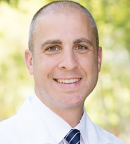
The commitment of all involved to produce a balanced and sensible document, which might actually help clinicians decide how to manage potential cardiac dysfunction in adult cancer survivors, should be enthusiastically celebrated.— Daniel J. Lenihan, MD
Tweet this quote
The success of cancer therapy has led us to an interesting place. Patients with cancer are certainly concerned about collateral damage that may occur with the treatment of their condition; however, impressive improvements in survival with treatment of many cancers are so compelling that these potential future cardiovascular concerns cannot dominate the decisions made at the moment of diagnosis. Once the “dust has settled” and a patient is facing the reality of significant cardiac limitations many years later, it is natural for patients, families, and providers to rethink the original moment of treatment and wonder what, if anything, could be improved.
Striving to Make Ourselves Better
We collectively have learned a tremendous amount over the past 2 decades in regard to cardiotoxicity, but we still have much to learn. As newer therapies develop, we have to “keep our eyes peeled” and be willing to consider all potential possibilities for cardiovascular toxicity. That is not to say that we should ultimately be crippled by “paralysis by analysis,” but rather we should act in a manner that we know is effective in all other cardiovascular conditions.
For example, if it is known that a cancer therapy is likely to result in severe hypertension, even acutely, and we know that controlling high blood pressure prevents the development of heart failure, we should make controlling blood pressure a priority and preferentially use drugs that are effective at preventing subsequent cardiac dysfunction. Additionally, carefully identifying patients at risk for cardiac dysfunction before we initiate potentially cardiotoxic therapy is such a sensible process, one wonders why we didn’t “get with the program” many years ago.
Furthermore, cardiac testing, either with imaging or serum biomarkers, has become so sophisticated and complex in virtually all of cardiovascular care that “deciphering the Rosetta Stone” may be comparable when it comes to establishing the presence of cardiotoxicity. Each of these tools has to be taken with a “grain of salt” and ultimately placed in the context of the patient and his or her cancer, the prescribed treatment, the magnitude of cardiac risks, and the important comorbid conditions.
One cannot reliably say that there is a clear “action point” or specific programmed clinical decision that must occur with an abnormal finding when a particular monitoring tool is used. It is exactly in this area where a “guideline” might be helpful. However, it should be strongly emphasized that a guideline is not a mandate, nor are the recommendations as clinically obvious as we might collectively desire.
‘One-of-a-Kind’ Guideline
This guideline,1 expertly led by Saro H. Armenian, DO, MPH, and reviewed in this issue of The ASCO Post, is the only actual guideline for the newly developing adult cardio-oncology discipline. This was a multidisciplinary project, with a careful review of all the relevant literature and a detailed and vetted set of recommendations, with all important stakeholders actively represented. The commitment of all involved to produce a balanced and sensible document, which might actually help clinicians decide how to manage potential cardiac dysfunction in adult cancer survivors, should be enthusiastically celebrated. I would also point out that the group did not exceed the available evidence when it came to a recommendation. In this manner, I would propose this document “hits the nail on the head” for certain.
Collaboration and Cooperation
The major principles I have absolutely learned from being a part of this tremendous effort is that collaboration and cooperation are the most important elements. Patients and providers from myriad medical disciplines had to engage actively, willingly contribute their expertise, and understand and respect the perspectives of others to come to a measured and reasonable conclusion. This process is a lot like what we were told by our parents that we needed to learn to “play well” in the same sandbox together. ■
Disclosure: Dr. Lenihan has received research funding from Takeda and consultant fees from Roche, Bristol-Myers Squibb, Amgen, and Prothena.
Reference
1. Armenian SH, Lacchetti C, Barac A, et al: Prevention and monitoring of cardiac dysfunction in survivors of adult cancers: American Society of Clinical Oncology clinical practice guideline. J Clin Oncol 35:893-911, 2017.



